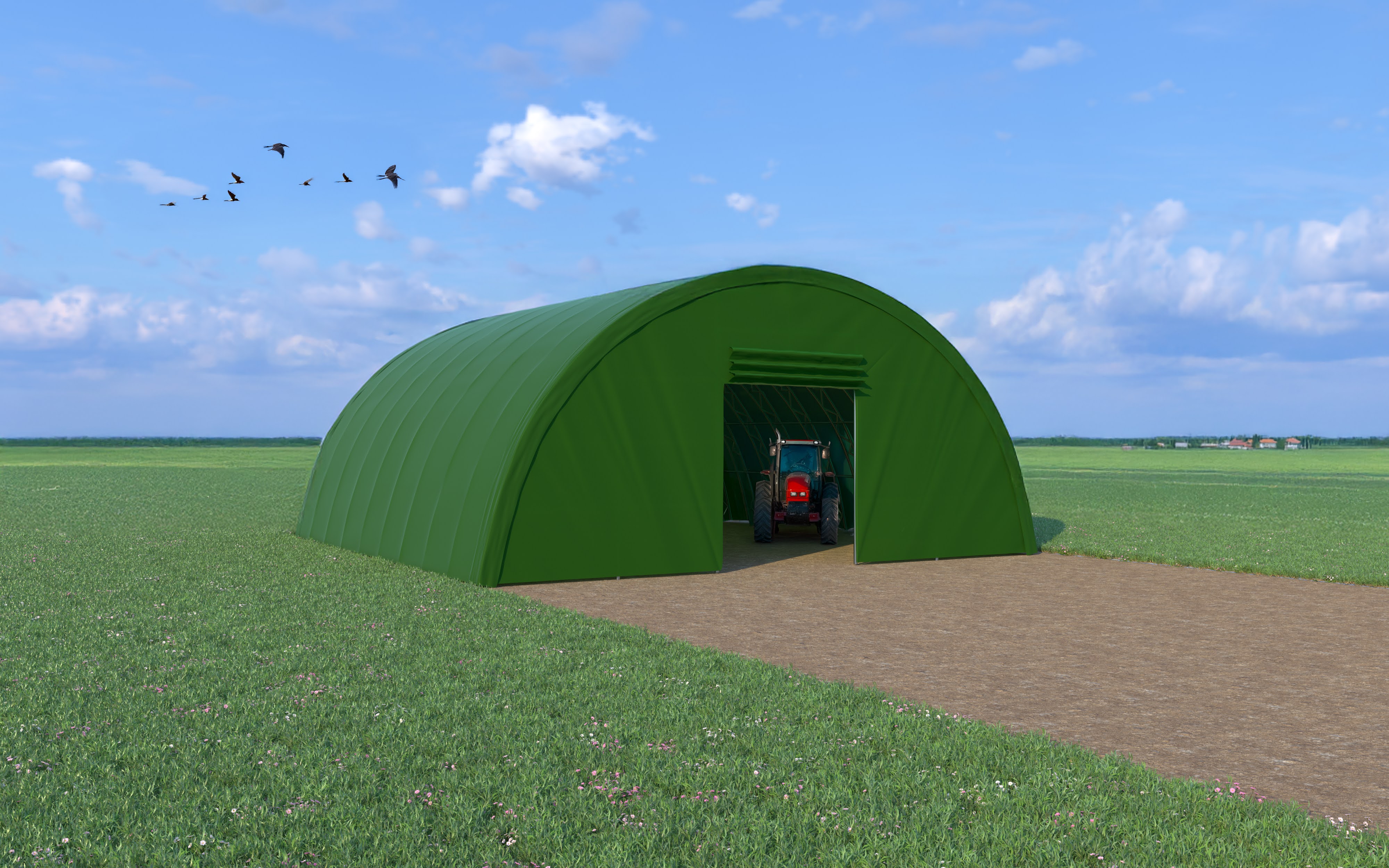Arch halls are a modern solution that is growing in popularity in the agricultural sector. Their construction is based on strong and flexible materials, which allow quick and easy assembly and disassembly. The characteristic curved shapes of the roof not only allow efficient use of space, but also provide excellent storage conditions for crops and machinery. How do arch halls actually work in the context of agriculture? Here are the most important aspects:
- Increased light transmission - the arched construction ensures even interior lighting, which has a beneficial effect on stored products and plant breeding.
- Optimal air circulation - promotes the maintenance of adequate temperature and humidity, which is crucial in many aspects of agriculture.
- Versatility of use - from the storage of agricultural equipment to space for livestock, arch halls can be adapted to suit a variety of needs.
With their features, they become an invaluable support for modern farms, offering the flexibility and functionality needed in a rapidly changing agricultural environment. Their construction, although simple, ensures long-lasting and stable use, which is an important asset in the daily work of farmers.
.jpg)
Advantages of arch halls over traditional buildings
There are numerous advantages to choosing arch halls, which make them an attractive alternative to traditional buildings such as barns or warehouses. First and foremost, arch halls are easier and quicker to erect than their traditional counterparts, thanks to their modern construction from lightweight and flexible materials. This allows for significant savings in both time and money, especially in the dynamically changing farm environment. Furthermore, the arched design allows for better use of natural light. In addition, they have better air circulation, which is conducive to maintaining the right climatic conditions, such as temperature and humidity, essential for storing crops and raising animals. In terms of versatility, arch halls can be easily adapted to a variety of needs - from machinery storage to animal housing, making them an extremely versatile solution. Against the backdrop of classic agricultural constructions, they provide greater flexibility, which is invaluable in the management of a modern farm.
Why are arch halls environmentally friendly?
Thanks to the use of lightweight and modern recyclable materials, their manufacture and installation generate fewer CO2 emissions compared to traditional buildings. In addition, the curved construction allows maximum use of natural light, which not only reduces the need for artificial lighting, but also contributes to energy savings. This, in turn, lowers the carbon footprint of farms, which is crucial in the fight against global warming.
They support environmental protection through optimal air circulation, which promotes the maintenance of natural climatic conditions without the need for external ventilation systems. This property eliminates the need for energy-consuming temperature and humidity control equipment, which also fits in with green solutions. Thanks to their versatility and adaptability, arch halls also minimise the environmental footprint when retrofitting or repurposing them, making them an extremely sustainable choice for environmentally conscious farmers.
Assembly and dismantling process
The process of assembling arch halls begins with site preparation, usually meaning levelling and hardening the ground to provide a stable base for the structure. Then the foundations are installed, often in the form of anchors to stabilise the entire structure. The next step is the installation of the arch support elements, which are usually made of lightweight but strong materials. These elements are joined together to form the basic skeleton of the storage tent. Once the skeleton is installed, a coating of flexible material is stretched over its surface to provide weather protection and influence the internal microclimate.
If demolition is required, the dismantling of the arch halls is done in the reverse order. Once the coating has been removed, the arch elements are dismantled and bolted together. Due to its simple construction, the ease of assembly and disassembly is a huge advantage, allowing the space to be quickly adapted according to changing agricultural needs. In both the construction and demolition of storage tent halls, it is important to act in accordance with the manufacturer's recommendations, which guarantees the safety and longevity of the materials used.

Modern technologies used in arch halls
Among the modern solutions, it is worth noting the advanced material systems that use lightweight but highly durable components, such as high-quality steel, which have resistance to weather conditions. The innovative coatings used to cover the skeleton of the storage tents are characterised by excellent light transmission, which helps to maintain a stable microclimate inside.
Another key aspect is the integrated management systems that enable:
- Remote monitoring and control of environmental parameters such as humidity and temperature.
- Energy-efficient LED lighting to support natural light.
With these technologies in arch halls, it is not only possible to increase the efficiency of their use, but also to reduce operating costs. Furthermore, the automation of processes facilitates the management of the storage tent hall, which is invaluable in the context of the increasing demands of modern agriculture. Together, these modern solutions make arched tent halls versatile, environmentally friendly and functional spaces.
Arch halls as a long-term investment
Arch halls are a long-term investment in the agricultural sector, offering a number of economic advantages. Their lightweight construction allows for rapid assembly, reducing initial installation costs. Thanks to modern technology and excellent light transmission, storage tent halls generate savings on artificial lighting and air circulation.
Here are the main economic aspects associated with use:
- Low maintenance thanks to durable materials.
- Reduction in energy costs through economical lighting and ventilation.
- Flexibility of adaptation to different agricultural applications.
In summary, arch halls are a strategic long-term investment, providing measurable savings and flexibility in farm management.
 Previous
Previous
